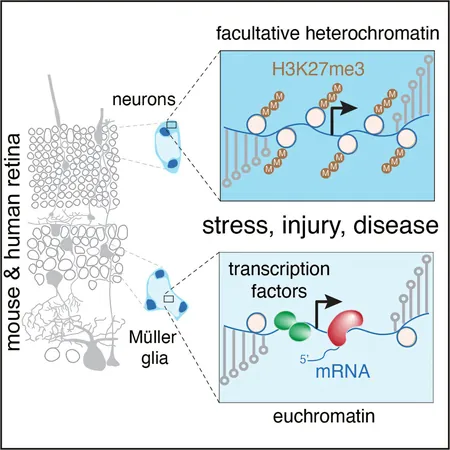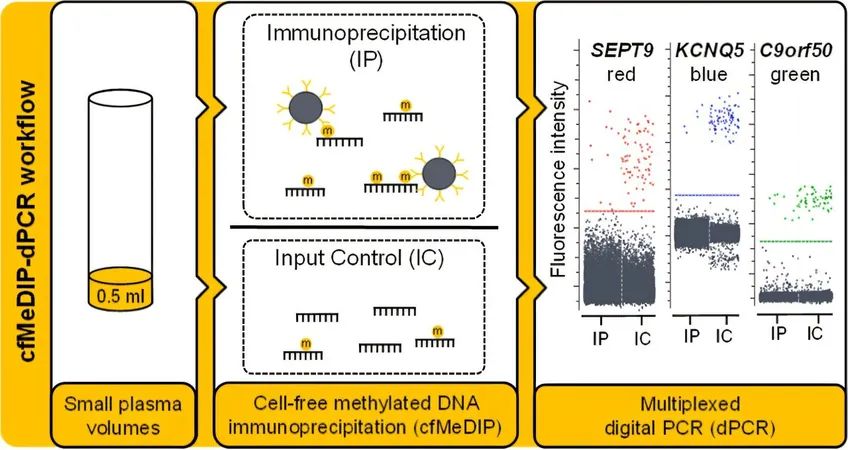
Breakthrough Discovery of 'Pliancy Genes' Reveals How Retinal Cells can Heal from Injury!
2025-01-03
Author: Mei
The Incredible Role of Müller Glia Cells
Müller glia play a vital role in maintaining retinal homeostasis. They act as supportive cells that help manage nutrient distribution, maintain the blood-retina barrier, and provide structural support. The newfound pliancy genes are accessible for gene expression, essentially waiting to be activated in response to stress, such as illness or injury.
Unlocking the Secrets of Chromatin Accessibility
The researchers employed an innovative microscopy technique known as lattice light sheet (LLS) microscopy, minimizing damage to cells during observation. This advanced imaging approach allowed them to uncover how differently each type of retinal cell organizes its genome, despite having the same genetic blueprint.
Single-Cell Sequencing: A Game-Changer in Research
Using single-cell sequencing methods, the team was able to circumvent the challenges posed by the predominant rod cells in the retina, which often obscure results. This helped researchers pinpoint the gene expression patterns specifically within Müller glia, providing invaluable insights into how these cells behave under stress.
Investigating the Impact of Stress on the Retina
The researchers subjected retinal cell samples to a multitude of stress conditions, mimicking real-world scenarios such as fever, diabetes, and infections. This multifaceted approach unveiled how Müller glia utilize their pliancy genes to mount robust inflammatory responses via cytokines. Understanding these mechanisms is vital for advancing treatments targeting retinal diseases.
A Promising Path for Future Therapies
This exciting research lays a foundational understanding of how Müller glia can respond to retinal stressors and could pave the way for innovative therapies aimed at enhancing retinal recovery after injury. As our knowledge of these pliancy genes expands, researchers are hopeful that this will lead to new strategies for treating conditions such as diabetic retinopathy, retinitis, and other sight-threatening diseases.
Conclusion
In conclusion, the discovery of pliancy genes opens an exciting avenue in retinal research, shedding light on the previously hidden potential of Müller glia cells in managing inflammation and recovery in oft-neglected eye tissues. Keep watching as this area of study unfolds—it could change the future of eye care as we know it!




 Brasil (PT)
Brasil (PT)
 Canada (EN)
Canada (EN)
 Chile (ES)
Chile (ES)
 Česko (CS)
Česko (CS)
 대한민국 (KO)
대한민국 (KO)
 España (ES)
España (ES)
 France (FR)
France (FR)
 Hong Kong (EN)
Hong Kong (EN)
 Italia (IT)
Italia (IT)
 日本 (JA)
日本 (JA)
 Magyarország (HU)
Magyarország (HU)
 Norge (NO)
Norge (NO)
 Polska (PL)
Polska (PL)
 Schweiz (DE)
Schweiz (DE)
 Singapore (EN)
Singapore (EN)
 Sverige (SV)
Sverige (SV)
 Suomi (FI)
Suomi (FI)
 Türkiye (TR)
Türkiye (TR)
 الإمارات العربية المتحدة (AR)
الإمارات العربية المتحدة (AR)